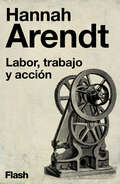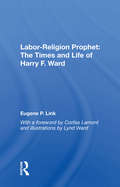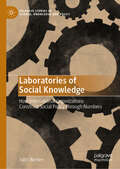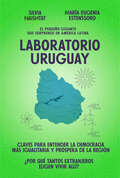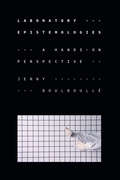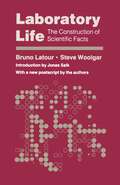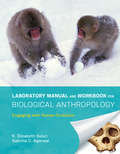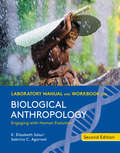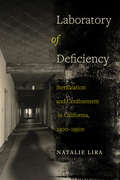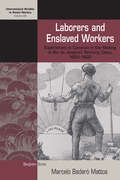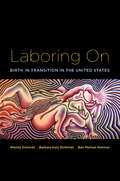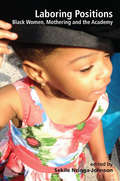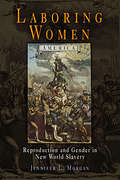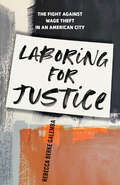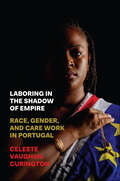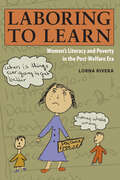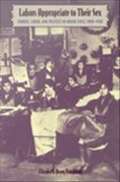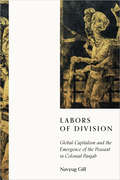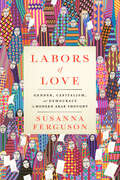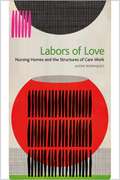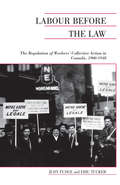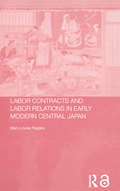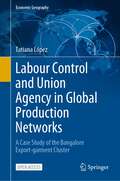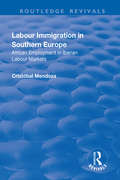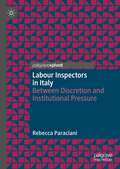- Table View
- List View
Labor, trabajo y acción
by Hannah ArendtFlash publica uno de los textos más representativos del pensamiento de Hannah Arendt. Un ensayo que reinterpreta los conceptos de labor, trabajo y acción en su relación con el ser humano a lo largo de la historia de la humanidad. «Es el momento de aprovechar esta oportunidad para pensar en lo que es un trabajo valioso de verdad». Enrique Zamorano, El Confidencial En este texto, recogido en La pluralidad del mundo, Hannah Arendt reflexiona sobre el significado del trabajo y su relación con el ser humano a lo largo del tiempo. La filósofa toma como base el concepto de vida activa y cómo en esta se desarrollan los tres medios (labor, trabajo y acción) con los que alcanzar el «ideal» al que los griegos aspiraban desde la era pre-filosófica: una vida contemplativa, aquella que les podría otorgar calma, paz interior y claridad de pensamiento. No obstante, Arendt da un paso más allá y trata de desmontar esa jerarquía donde prevaleció durante siglos la contemplación y la calma. ¿Y si la vida activa fuera inherente al ser humano? ¿Y si estamos predestinados a la actividad para mantenernos vivos? ¿No deberíamos resignificar nuestros valores? Con estas preguntas, Arendt examina los tres conceptos que ponen en el centro al ser humano y su relación con el entorno: la labor, como una actividad rutinaria y necesaria para la supervivencia del individuo; el trabajo, como el esfuerzo que produce un mundo con objetos sólidos y perdurables, que sobreviven a la finitud de los organismos vivos; la acción, intrínseca a los seres humanos desde que nacemos, porque estamos condenados a relacionarnos y nuestros actos tienen causas y consecuencias infinitas. A través del estudio y la separación de estas tres ideas, Arendt pone en valor la vida activa para comprender que no se puede prescindir de ella en pro de la contemplación, puesto que reivindicar la labor, el trabajo y la acción es reivindicar nuestra propia libertad como individuos en el mundo. Sobre La pluralidad del mundo: «Hoy, como entonces, el vocabulario que empleó Arendt para pensar y narrar el mundo, sus reflexiones y esa escritura tan bella, tan suya, nos ayudan a interpretar lo que nos ocurre, aunque solo sea como simples enanos mirando el mundo a hombros de gigantes. Ella, desde luego, lo fue.»Máriam Martínez-Bascuñán, Babelia, El País «Hannah Arendt volvió a pensar el espacio público después de su destrucción y nosotros debemos volver a ella para prevenir que se destruya de nuevo.»Andreu Jaume «Judía y alemana, Hannah Arendt reflexiona sobre la ascensión del nazismo y la ceguera de no haber visto a tiempo su peligro.»César Antonio Molina, ABC Sobre La libertad de ser libres: «Este ensayo recién redescubierto es como una petición de compromiso político en la era de Trump.»Die Zeit «Pese a haber sido escrito hace cincuenta años, es tan moderno que parece pensado para la actualidad política mundial.»Westdeutscher Rundfunk «Un ensayo inspirador de una relevancia extraordinaria, especialmente en tiempos en que se cuestionan los valores liberales del orden democrático.»Philosophie Sobre Eichmann en Jerusalén: «Es historia, es pensamiento y es advertencia -aún hoy- sobre las consecuencias de la banalidad del mal, de la que a pesar de lo vivido, no estamos vacunados.»Laura Barrachina, RNE «Un ensayo imprescindible. Arendt no se olvida de nadie.»Marta Michel, El Mundo - Yo Dona «En vez de defender la causa de su pueblo de manera incondicional, Arendt se puso a reflexionar, investigar y debatir. En palabras de Aristóte
Labor-religion Prophet: The Times And Life Of Harry F. Ward
by Eugene P LinkAs first national chairman of the American Civil Liberties Union, the first professor of Christian ethics at both Boston University and Union Theological Seminary, and a pioneer of dialogs between religion and Marxism, Harry F. Ward led a life marked with many milestones. An advocate of the working-class and the underprivileged, Ward avoided the do
Laboratories of Social Knowledge: How International Organizations Construct Social Policy Through Numbers (Palgrave Studies in Science, Knowledge and Policy)
by John BertenThe book examines the politics of knowledge in global social policy, investigating how international organisations (IOs) have contributed to the emergence and development of social security as a global policy field. It reconstructs the role of numerical knowledge in the International Labour Organization (ILO) and the World Bank, theorising how IOs contribute to epistemic infrastructures of global social security. The book shows how IOs&’ knowledge production has led to a continuous refinement of the meaning and purpose of social security. First, it reveals how IOs arrived at a shared conception of social security: what the book calls an ontological framework. Second, it traces how numbers have increasingly enabled the assessment of countries according to shared benchmarks: what the book calls an evaluative framework. The author demonstrates the political and epistemic work involved in universalising knowledge of social security, while highlighting the limits of governing by numbers in global social policy.
Laboratorio Uruguay: El pequeño gigante que sorprende en América Latina
by Silvia Naishtat María Eugenia EstenssoroUn recorrido fascinante por el laboratorio político, económico, social y cultural más exitoso y sugestivo del momento: Uruguay, ese edén sudamericano que se abre camino con mesura en medio de una región convulsionada. A partir de 2020, la Argentina comenzó a asistir a un fenómeno inédito: la emigración a Uruguay de un creciente número de destacados emprendedores tecnológicos, profesionales con excelentes empleos y dueños de poderosos grupos económicos. Ya no se trataba de perseguidos políticos o de desempleados, como había ocurrido en épocas anteriores, sino de personas que, por su solvencia financiera y su experiencia empresarial, movían la economía generando innovación, trabajo y riqueza. ¿Por qué, pudiendo vivir en Nueva York, Londres, París o Tel Aviv, ellos elegían Punta del Este, José Ignacio, Montevideo y hasta Colonia del Sacramento? Silvia Naishtat y María Eugenia Estenssoro se propusieron dilucidar las claves detrás de la novedosa elección de vida de muchos argentinos (y la fantasía de otros) y el resultado es un libro revelador. Con abundante información y el testimonio de sus protagonistas -desde Julio Bocca a "los Messi" del campo y los unicornios tecnológicos-, como también de notables personalidades de la política uruguaya, logran contagiar su admiración por "el pequeño gigante latinoamericano", sin imaginar por ello un destino contrapuesto para la Argentina: "No creemos en las antinomias, ellos y nosotros -dicen-. Más bien, pretendemos derribar fronteras y barreras para aprovechar nuestra potencia cuando creamos, trabajamos y mateamos juntos".
Laboratory Epistemologies: A Hands-On Perspective (Experimental Futures)
by Jenny BoulboulléIn Laboratory Epistemologies: A Hands-On Perspective, Jenny Boulboullé examines the significance of hands-on experiences in contemporary life sciences laboratories. Addressing the relationship between contemplation and manipulation in epistemology, Boulboullé combines participant observations in molecular genetics labs and microbiological cleanrooms with a longue durée study of the history and philosophy of science. She radically rereads Descartes’s key epistemological text Meditations on First Philosophy, reframing the philosopher as a hands-on knowledge maker. With this reading, Boulboullé subverts the pervasive modern conception of the disembodied knower and puts the hands-on experimenter at the heart of life sciences research. In so doing, she contributes a theoretical model for understanding how life processes on cellular and molecular levels are manually produced in today’s techno-scientific spaces. By reassessing the Cartesian legacy and arguing that epistemology should be grounded in the standpoint of a hands-on practitioner, Boulboullé offers the philosophical and historical foundation to understand and study contemporary life sciences research as multisensory embodied practices.
Laboratory Life: The Construction of Scientific Facts
by Steve Woolgar Bruno LatourThis highly original work presents laboratory science in a deliberately skeptical way: as an anthropological approach to the culture of the scientist. Drawing on recent work in literary criticism, the authors study how the social world of the laboratory produces papers and other "texts,"' and how the scientific vision of reality becomes that set of statements considered, for the time being, too expensive to change. The book is based on field work done by Bruno Latour in Roger Guillemin's laboratory at the Salk Institute and provides an important link between the sociology of modern sciences and laboratory studies in the history of science.
Laboratory Manual and Workbook for Biological Anthropology
by Sabrina C. Agarwal K. Elizabeth SoluriThe perfect lab solution. A vividly illustrated, flexible, and topically balanced manual with a critical-thinking approach
Laboratory Manual and Workbook for Biological Anthropology (Second Edition): Engaging With Human Evolution
by Sabrina C. Agarwal K. Elizabeth SoluriThe most popular and affordable manual, now more hands-on than ever! The #1 manual for biological anthropology, Soluri/Agarwal has become even more visual and hands-on in its Second Edition. Whether used standalone or packaged with a Norton textbook, Soluri/Agarwal is the most affordable manual for students. This purchase offers access to the digital ebook only.
Laboratory of Deficiency: Sterilization and Confinement in California, 1900–1950s (Reproductive Justice: A New Vision for the 21st Century #6)
by Natalie LiraPacific Colony, a Southern California institution established to care for the "feebleminded," justified the incarceration, sterilization, and forced mutilation of some of the most vulnerable members of society from the 1920s through the 1950s. Institutional records document the convergence of ableism and racism in Pacific Colony. Analyzing a vast archive, Natalie Lira reveals how political concerns over Mexican immigration—particularly ideas about the low intelligence, deviant sexuality, and inherent criminality of the "Mexican race"—shaped decisions regarding the treatment and reproductive future of Mexican-origin patients. Laboratory of Deficiency documents the ways Mexican-origin people sought out creative resistance to institutional control and offers insight into how race, disability, and social deviance have been called upon to justify the confinement and reproductive constraint of certain individuals in the name of public health and progress.
Laborers and Enslaved Workers: Experiences in Common in the Making of Rio de Janeiro's Working Class, 1850-1920
by Marcelo Badaró MattosFrom the middle of the nineteenth century until the 1888 abolition of slavery in Brazil, Rio de Janeiro was home to the largest urban population of enslaved workers anywhere in the Americas. It was also the site of an incipient working-class consciousness that expressed itself across seemingly distinct social categories. In this volume, Marcelo Badaró Mattos demonstrates that these two historical phenomena cannot be understood in isolation. Drawing on a wide range of historical sources, Badaró Mattos reveals the diverse labor arrangements and associative life of Rio's working class, from which emerged the many strategies that workers both free and unfree pursued in their struggles against oppression.
Laboring On: Birth in Transition in the United States (Perspectives on Gender)
by Barbara Katz Rothman Wendy Simonds Bari Meltzer NormanFacing the polar forces of an epidemic of Cesarean sections and epidurals and home-like labor rooms, American birth is in transition. Caught between the most extreme medicalization — best seen in a Cesarean section rate of nearly 30 percent — and a rhetoric of women’s "choices" and "the natural," women and their midwives, doulas, obstetricians, and nurses labor on. Laboring On offers the voices of all of these practitioners, all women trying to help women, as they struggle with this increasingly split vision of birth. Updating Barbara Katz Rothman's now-classic In Labor, the first feminist sociological analysis of birth in the United States, Laboring On gives a comprehensive picture of the ever-changing American birth practices and often conflicting visions of birth practitioners. The authors deftly weave compelling accounts of birth work, by midwives, doulas, obstetricians, and nurses, into the larger sociohistorical context of health care practices and activism and offer provocative arguments about the current state of affairs and the future of birth in America.
Laboring Positions: Black Women, Mothering And The Academy
by Sekile Nzinga-JohnsonLaboring Positions aims to disrupt the dominant discourse on academic women’s mothering experiences. Black women’s maternity is assumed, and yet is also silenced within the disembodied, patriarchal, racist, antifamily, and increasingly neoliberal work environment of academia. This volume acknowledges the salience of the institutional challenges facing contemporary caregiving academics; yet it is centrally concerned with expanding the academic mothering conversation by speaking against the private/public spheres approach. Laboring Positions does so by privileging the hybridity between Black women’s mothering experiences and their working lives within and beyond the academy. The collection also intentionally blurs essentialist boundaries of mother and “other”, which dictates and generates alternate border zones of knowledge production concerning Black academic women’s working lives. In doing so, the diverse perspectives captured herein offer us cogent starting points from which to interrogate the interlocking cultural, political, and economic hierarchies of the academy. The editorial goal of Laboring Positions is to offer a polyvocal collection embodying themes that privilege and arouse Black mothering as central in the narratives, research, and models of existence and resistance for Black women’s survival within the academy. The contributors utilize a wide variety of methods and perspectives including Black feminist theory, intersectional feminism, Womanist research ethics, hip-hop feminism, African-centered epistemologies, literary analysis, autoethnography, policy analysis, memoir, qualitative research, survival strategies and frameworks, and situated testimony that are all collectively bound by Black women’s intellectual lives, activist impulses, and experiences of mothering or being mothered. The critical embodied perspectives herein serve as evidence that Black women exist beyond the institutional and ideological boundaries that have attempted to define their journeys. Laboring Positions’ chapters speak to each other and some conversations are louder than others; yet together they offer us a complexly nuanced portrait of the emergent literature on race, gender, mothering, and work.
Laboring Women: Reproduction and Gender in New World Slavery
by Jennifer L. MorganWhen black women were brought from Africa to the New World as slave laborers, their value was determined by their ability to work as well as their potential to bear children, who by law would become the enslaved property of the mother's master. In Laboring Women: Reproduction and Gender in New World Slavery, Jennifer L. Morgan examines for the first time how African women's labor in both senses became intertwined in the English colonies. Beginning with the ideological foundations of racial slavery in early modern Europe, Laboring Women traverses the Atlantic, exploring the social and cultural lives of women in West Africa, slaveowners' expectations for reproductive labor, and women's lives as workers and mothers under colonial slavery.Challenging conventional wisdom, Morgan reveals how expectations regarding gender and reproduction were central to racial ideologies, the organization of slave labor, and the nature of slave community and resistance. Taking into consideration the heritage of Africans prior to enslavement and the cultural logic of values and practices recreated under the duress of slavery, she examines how women's gender identity was defined by their shared experiences as agricultural laborers and mothers, and shows how, given these distinctions, their situation differed considerably from that of enslaved men. Telling her story through the arc of African women's actual lives—from West Africa, to the experience of the Middle Passage, to life on the plantations—she offers a thoughtful look at the ways women's reproductive experience shaped their roles in communities and helped them resist some of the more egregious effects of slave life.Presenting a highly original, theoretically grounded view of reproduction and labor as the twin pillars of female exploitation in slavery, Laboring Women is a distinctive contribution to the literature of slavery and the history of women.
Laboring for Justice: The Fight Against Wage Theft in an American City
by Rebecca Berke GalembaLaboring for Justice highlights the experiences of day laborers and advocates in the struggle against wage theft in Denver, Colorado. Drawing on more than seven years of research that earned special recognition for its community engagement, this book analyzes the widespread problem of wage theft and its disproportionate impact on low-wage immigrant workers. Rebecca Galemba focuses on the plight of day laborers in Denver, Colorado—a quintessential purple state that has swung between some of the harshest and more welcoming policies around immigrant and labor rights. With collaborators and community partners, Galemba reveals how labor abuses like wage theft persist, and how advocates, attorneys, and workers struggle to redress and prevent those abuses using proactive policy, legal challenges, and direct action tactics. As more and more industries move away from secure, permanent employment and towards casualized labor practices, this book shines a light on wage theft as symptomatic of larger, systemic issues throughout the U.S. economy, and illustrates how workers can deploy effective strategies to endure and improve their position in the world amidst precarity through everyday forms of convivencia and resistance. Applying a public anthropology approach that integrates the experiences of community partners, students, policy makers, and activists in the production of research, this book uses the pressing issue of wage theft to offer a methodologically rigorous, community-engaged, and pedagogically innovative approach to the study of immigration, labor, inequality, and social justice.
Laboring in the Shadow of Empire: Race, Gender, and Care Work in Portugal (Inequality at Work: Perspectives on Race, Gender, Class, and Labor)
by Celeste Vaughan CuringtonLaboring in the Shadow of Empire: Race, Gender, and Care Work in Portugal examines the everyday lives of an African-descendant care service workforce that labors in an ostensibly “anti-racial” Europe and against the backdrop of the Portuguese colonial empire. While much of the literature on global care work has focused on Asian and Latine migrant care workers, there is comparatively less research that explicitly examines African care workers and their migration histories to Europe. Sociologist Celeste Vaughan Curington focuses on Portugal—a European setting with comparatively liberal policies around family settlement and naturalization for migrants. In this setting, rapid urbanization in the late twentieth century, along with a national push to reconcile work and family, has shaped the growth of paid home care and cleaning service industries. Many researchers focus on informal work settings, where immigrant rights are restricted and many workers are undocumented or without permanent residence status. Curington instead examines workers who have accessed citizenship or permanent residence status and also explores African women’s experiences laboring in care and service industries in the formal market, revealing how deeply colonial and intersectional logics of a racialized and international division of reproductive labor in Portugal render these women “hyper-invisible” and “hyper-visible” as “appropriate” workers in Lisbon.
Laboring to Learn: Women's Literacy and Poverty in the Post-Welfare Era
by Lorna RiveraThe American adult education system has become an alternative for school dropouts, with some state welfare policies requiring teen mothers and women without high school diplomas to participate in adult education programs to receive aid. Currently, low-income women of color are more likely to be enrolled in the lowest levels of adult basic education. Very little has been published about women's experiences in these mandatory programs and whether the programs reproduce the conditions that forced women to drop out in the first place. Lorna Rivera bridges the gap with this important study, the product of ten years' active ethnographic research with formerly homeless women who participated in adult literacy education classes before and after welfare reform. She draws on rich interviews with organizers and participants in the Adult Learners Program at Project Hope, a women's shelter and community development organization in Boston's Dudley neighborhood, one of the poorest in the city. Analyzing the web of ideological contradictions regarding "work first" welfare reform policies, Rivera argues that poverty is produced and reproduced when women with low literacy skills are pushed into welfare-to-work programs and denied education. She examines how various discourses about individual choice and self-sufficiency shape the purposes of literacy, how low-income women express a sense of personal responsibility for being poor, and how neoliberal ideologies and practices compromise the goals of critical literacy programs. Throughout this study, the voices and experiences of formerly homeless women challenge cultural stereotypes about poor women, showing in personal and structural terms how social and economic forces shape and restrict opportunities for low-income women of color.
Labors Appropriate to Their Sex: Gender, Labor, and Politics in Urban Chile, 1900-1930
by Elizabeth Quay HutchisonIn Labors Appropriate to Their Sex Elizabeth Quay Hutchison addresses the plight of working women in early twentieth-century Chile, when the growth of urban manufacturing was transforming the contours of women's wage work and stimulating significant public debate, new legislation, educational reform, and social movements directed at women workers. Challenging earlier interpretations of women's economic role in Chile's industrial growth, which took at face value census figures showing a dramatic decline in women's industrial work after 1907, Hutchison shows how the spread of industrial sweatshops and changing definitions of employment in the census combined to make female labor disappear from census records at the same time that it was in fact burgeoning in urban areas. In addition to population and industrial censuses, Hutchison culls published and archival sources to illuminate such misconceptions and to reveal how women's paid labor became a locus of anxiety for a society confronting social problems--both real and imagined--that were linked to industrialization and modernization. The limited options of working women were viewed by politicians, elite women, industrialists, and labor organizers as indicative of a society in crisis, she claims, yet their struggles were also viewed as the potential springboard for reform. Labors Appropriate to Their Sex thus demonstrates how changing norms concerning gender and work were central factors in conditioning the behavior of both male and female workers, relations between capital and labor, and political change and reform in Chile. This study will be rewarding for those whose interests lie in labor, gender, or Latin American studies; as well as for those concerned with the histories of early feminism, working-class women, and sexual discrimination in Latin America.
Labors of Division: Global Capitalism and the Emergence of the Peasant in Colonial Panjab (South Asia in Motion)
by Navyug GillOne of the most durable figures in modern history, the peasant has long been a site of intense intellectual and political debate. Yet underlying much of this literature is the assumption that peasants simply existed everywhere, a general if not generic group, traced backward from modernity to antiquity. Focused on the transformation of Panjab during the nineteenth and early twentieth centuries, this book accounts for the colonial origins of global capitalism through a radical history of the concept of "the peasant," demonstrating how seemingly fixed hierarchies were in fact produced, legitimized, and challenged within the preeminent agricultural region of South Asia. Navyug Gill uncovers how and why British officials and ascendant Panjabis disrupted existing forms of identity and occupation to generate a new agrarian order in the countryside. The notion of the hereditary caste peasant engaged in timeless cultivation thus emerged, paradoxically, as a result of a dramatic series of conceptual, juridical, and monetary divisions. Far from archaic relics, this book ultimately reveals both the landowning peasant and landless laborer to be novel political subjects forged through the encounter between colonialism and struggles over culture and capital within Panjabi society. Questions of progress, exploitation and knowledge come to animate the vernacular operations of power. With this history, Gill brings difference and contingency to understandings of the global past in order to re-think the itinerary of comparative political economy as well as alternative possibilities for emancipatory futures.
Labors of Love: Gender, Capitalism, and Democracy in Modern Arab Thought
by Susanna FergusonHow to raise a child became a central concern of intellectual debate from Cairo to Beirut over the course of the late nineteenth and early twentieth centuries. Intimately linked with discussions around capitalism and democracy, considerations about women, gender, and childrearing emerged as essential to modern social theory. Arab writers, particularly women, made sex, the body, and women's ethical labor central to fending off European imperial advances, instituting representative politics, and managing social order. Labors of Love traces the political power of motherhood and childrearing in Arabic thought. Susanna Ferguson reveals how debates around raising children became foundational to feminist, Islamist, and nationalist politics alike—opening up conversations about civilization, society, freedom, temporality, labor, and democracy. While these debates led to expansions in girls' education and women writers' authority, they also attached the fate of nations to women's unwaged labor in the home. Ferguson thus reveals why women and the family have been stumbling blocks for representative regimes around the world. She shows how Arab women's writing speaks to global questions—the devaluation of social reproduction under capitalism, the stubborn maleness of the liberal subject, and why the naturalization of embodied, binary gender difference has proven so difficult to overcome.
Labors of Love: Nursing Homes and the Structures of Care Work
by Jason RodriquezEvery day for the next twenty years, more than 10,000 people in the United States will turn 65. With life expectancies increasing as well, many of these Americans will eventually require round-the-clock attention—and we have only begun to prepare for the challenge of caring for them. In Labors of Love, Jason Rodriquez examines the world of the fast-growing elder care industry, providing a nuanced and balanced portrait of the day-to-day lives of the people and organizations that devote their time to supporting America’s aging population. Through extensive ethnographic research, interviews with staff and management, and analysis of internal documents, Rodriquez explores the inner workings of two different nursing homes—one for-profit and one non-profit—to understand the connections among the administrative regulations, the professional requirements, and the type of care provided in both types of facilities. He reveals a variety of challenges that nursing home care workers face day to day: battles over the budget; the administrative hurdles of Medicaid and Medicare; the employees’ struggle to balance financial stability and compassionate care for residents. Yet, Rodriquez argues, nursing home workers give meaning and dignity to their work by building emotional attachments to residents and their care. An unprecedented study, Labors of Love brings new insight into the underlying structures of a crucial and expanding sector of the American health care system.
Labour Before the Law
by Judy Fudge Eric TuckerIn this groundbreaking study of the relations between workers and the state, Judy Fudge and Eric Tucker examine the legal regulation of workers' collective action from 1900 to 1948. They analyze the strikes, violent confrontations, lockouts, union organizing drives, legislative initiatives, and major judicial decisions that transformed the labour relations regime of liberal voluntarism, which prevailed in the later part of the nineteenth century, into industrial voluntarism, whose centrepiece was Mackenzie King's Industrial Disputes Investigation Act of 1907. This period was marked by coercion and compromise, as workers organized and fought to extend their rights against the profit oriented owners of capital, while the state struggled to define a labour regime that contained industrial conflict. The authors then trace the conflicts that eventually produced the industrial pluralism that Canadians have known in more recent years.By 1948 a detailed set of legal rules and procedures had evolved and achieved a hegemonic status that no prior legal regime had even approached. This regime has become so central to our everyday thinking about labour relations that one might be forgiven for thinking that everything that came earlier was, truly, before the law. But, as Labour Before the Law demonstrates, workers who acted collectively prior to 1948 often found themselves before the law, whether appearing before a magistrate charged with causing a disturbance, facing a superior court judge to oppose an injunction, or in front of a board appointed pursuant to a statutory scheme that was investigating a labour dispute and making recommendations for its resolution.The book is simultaneously a history of law, aspects of the state, trade unions and labouring people, and their interaction within the broad and shifting terrain of political economy. The authors are attentive to regional differences and sectoral divergences, and they attempt to address the fragmentation of class experience.
Labour Contracts and Labour Relations in Early Modern Central Japan (Changing Labour Relations in Asia)
by Mary Louise NagataBased on a collection of labour contracts and other documents, this book examines the legal, economic and social relations of labour as they developed in the commercial enterprises of Tokugawa Japan. The urban focus is Kyoto, the cultural capital and smallest of the three great cities of the Tokugawa period, but the data comes from a wider region of commercial and castle towns and rural villages in central Japan.
Labour Control and Union Agency in Global Production Networks: A Case Study of the Bangalore Export-garment Cluster (Economic Geography)
by Tatiana LópezThis book puts Indian garment workers and their organisations at the centre of the analysis. Taking the Bangalore export-garment cluster as a case study, the book explores the conditions that enable but also constrain the capacities of garment workers’ unions to build collective power vis-à-vis employers and thereby improve their conditions. Drawing on theoretical concepts from labour geography, relational economic geography, and Global Production Network (GPN) analysis, the book highlights, on the one hand, how the complex labour control regime in the Bangalore export-garment cluster poses manifold challenges and constraints for workers’ and unions’ collective agency. On the other hand, the book illustrates the various networked agency strategies that local garment unions in Bangalore have developed over the years to overcome these constraints by tapping into coalitional power resources from worker, consumer and labour rights organisations in the Global North.This book is therefore highly relevant for economic geographers and other scholars interested in dynamics of labour and development in GPNs as well as for unionists and labour rights activists committed to improving working conditions in the global garment industry.This is an open access book.
Labour Immigration in Southern Europe: African Employment in Iberian Labour Markets (Routledge Revivals Ser.)
by Cristobal MendozaThis title was first published in 2003. Research on migration into southern Europe has paid little consideration to the ways of incorporating immigrants into labour markets and the impact these foreign-born workers have on local labour markets. Neither has much attention been given to the character of labour markets that enables these workers to find a job. This book fills that gap by exploring case studies of African employment in Spain and Portugal. Using cross-border perspectives, this book provides in-depth analysis of common trends across borders, such as immigrant employment in manual, low-skilled jobs, uneven immigrant involvement in labour markets, and the impact of national characteristics, economies and political environments. The result is a study which should be useful for migration specialists, economic geographers and labour market analysts alike.
Labour Inspectors in Italy: Between Discretion and Institutional Pressure
by Rebecca ParacianiThis book analyses labour inspectors’ discretionary practices in handling complex cases of labour exploitation in the Italian context. By outlining three years of field research, the volume uses the theoretical framework of street-level bureaucracy in the Italian context and integrates it with a neo-institutionalist perspective, focusing on the isomorphic pressures from the institutional field in which the labour inspectors operate. The book will be of use to advanced undergraduate students and scholars in the fields of sociology, organization studies, law and criminology, political science and public administration.
